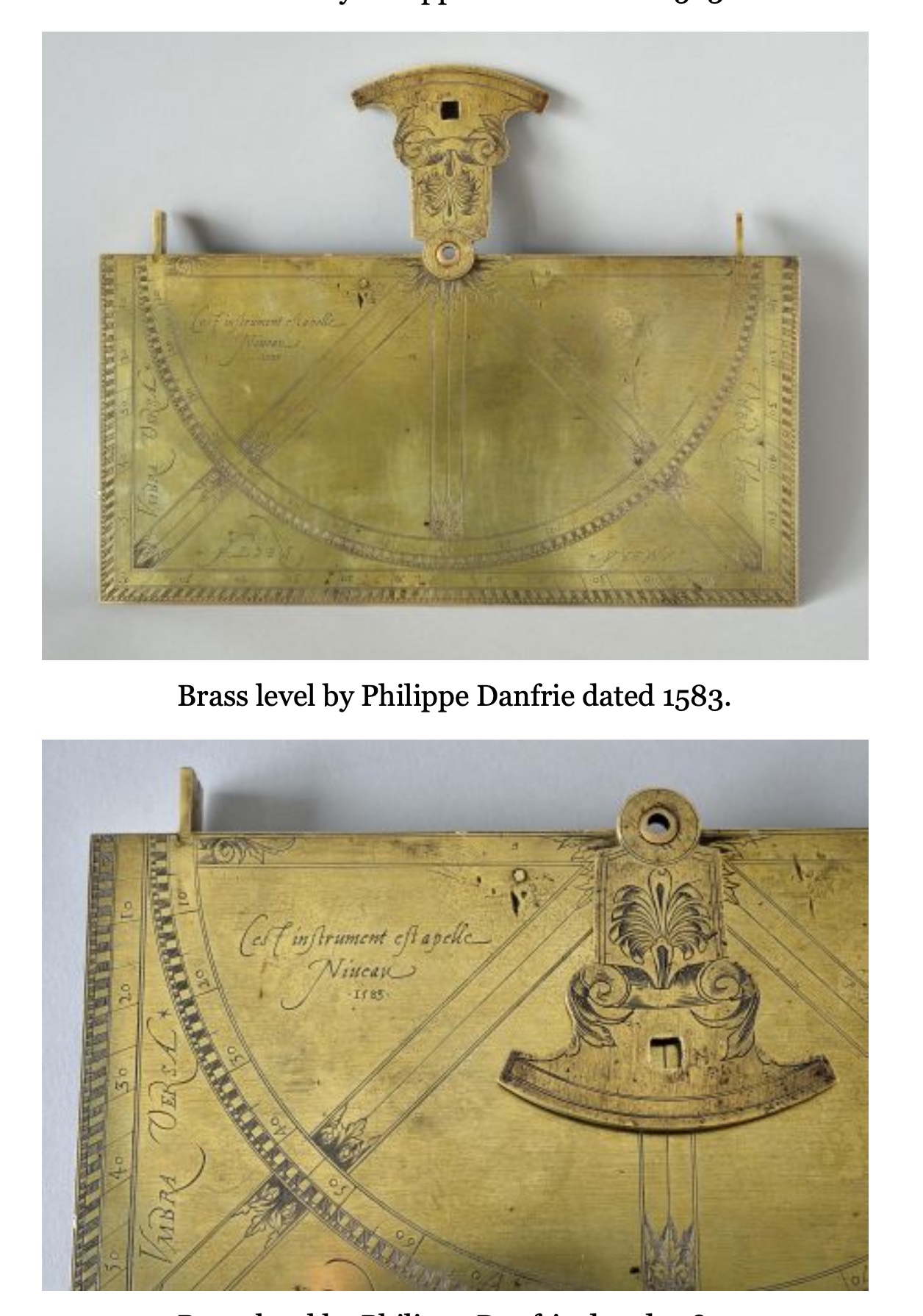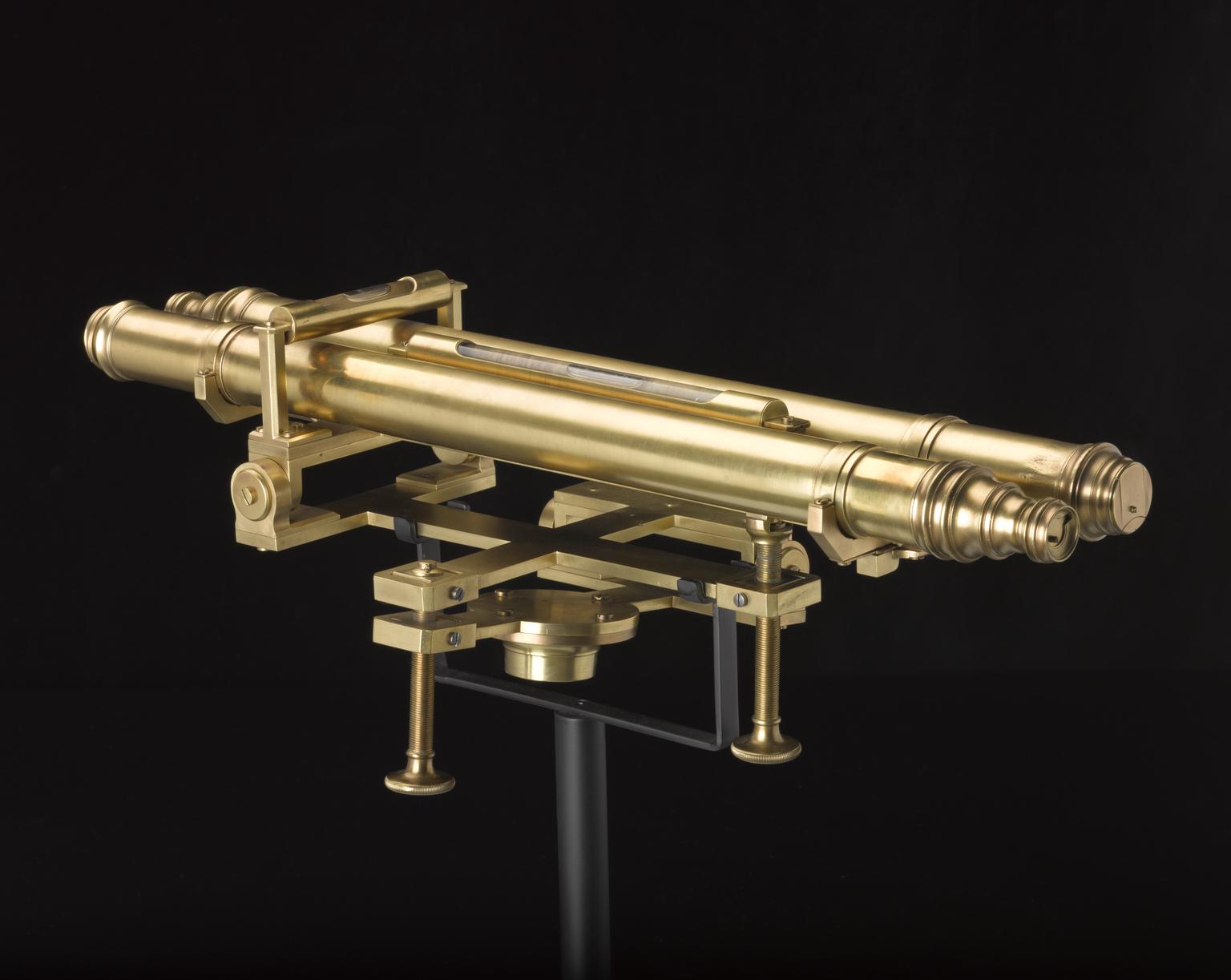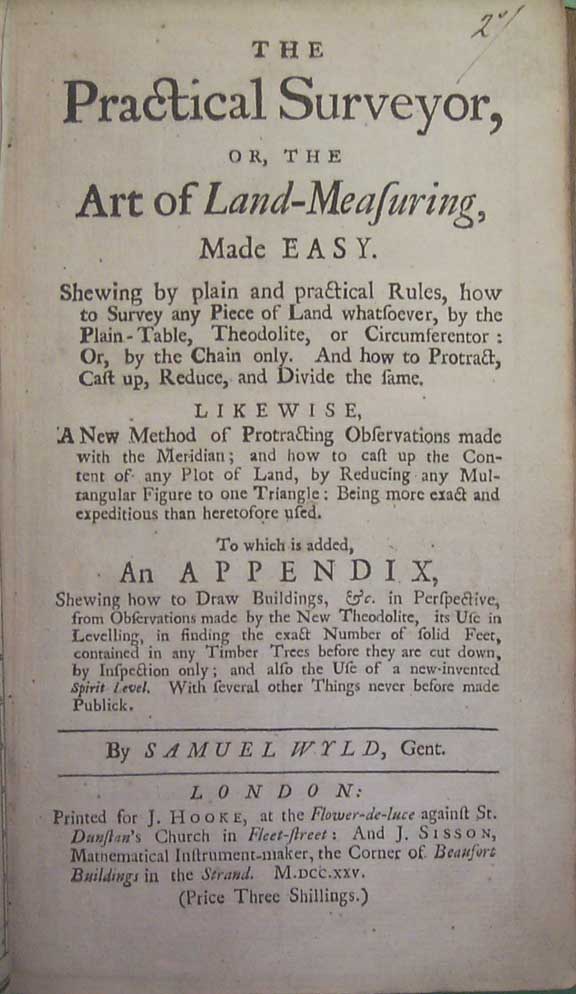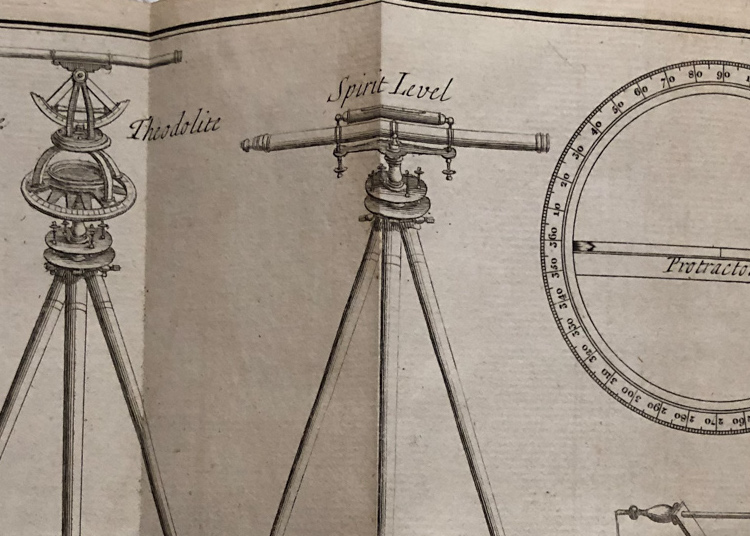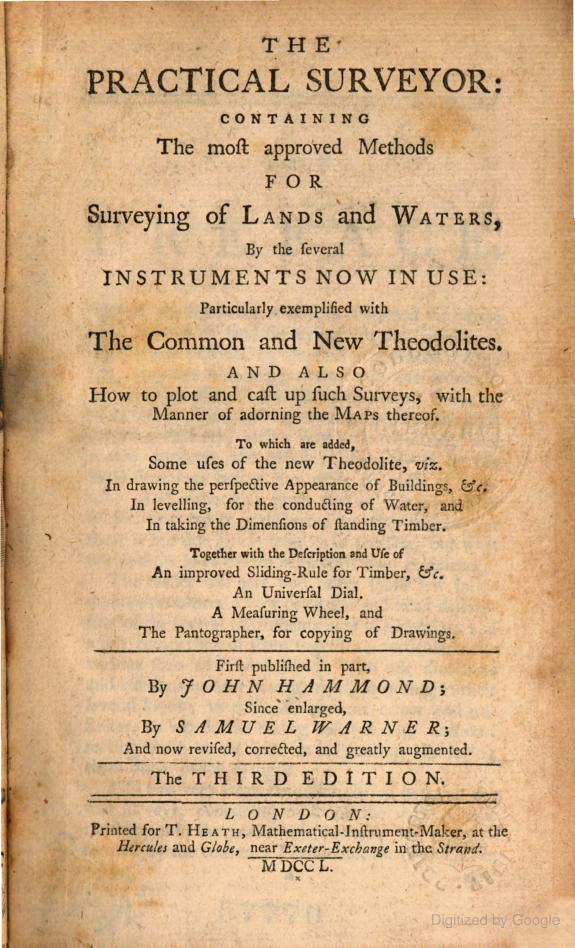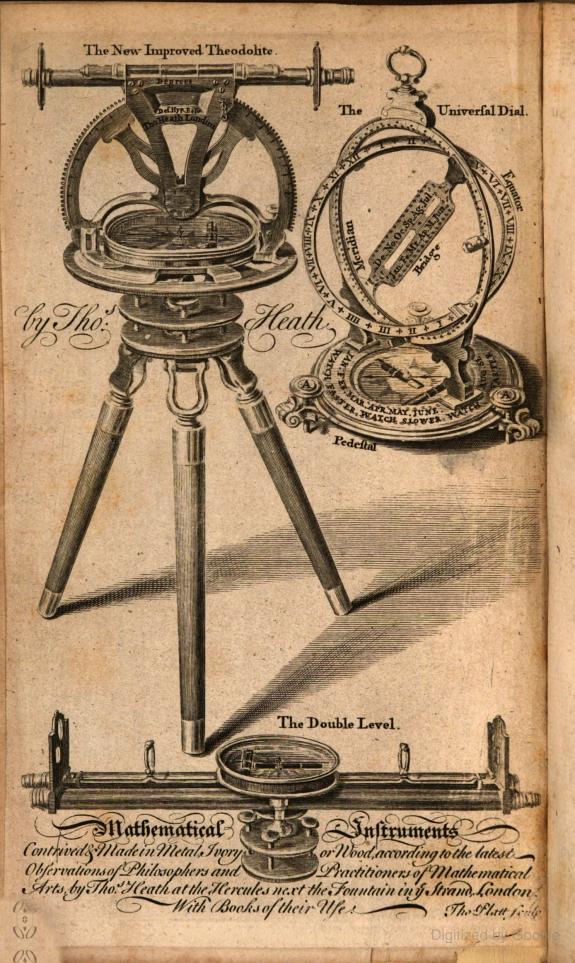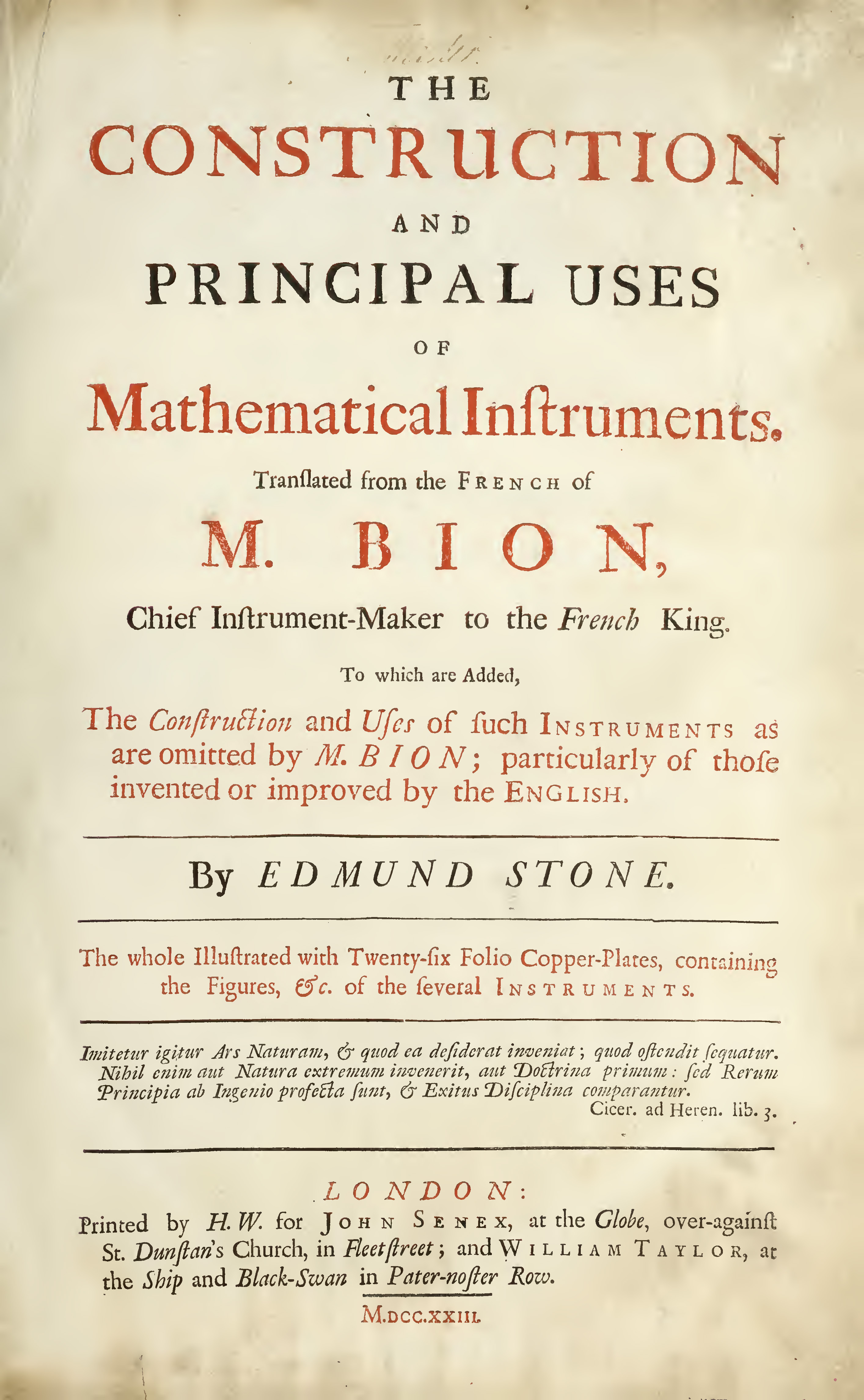
The Level Playing Card Circa 1700
Levels
Levels play a limited role in surveying prior to the advent of Railroads in the early 19th Century. Prior to Railroads, Levels were used mainly for moving water, as indicated by the Circa 1700 Playing Card at the top of this webpage.
The Basic Design Differences
I see Four Major Early Level Designs:
1. A Level with sight vanes and where the sight vanes tilt and the change in slope is measured by a Shadow Box or an arc divided into degrees. See the 1583 Danfrie Level pictured below.
2. A Level based on equalizing two separate water levels, with the slope measure by an arc divided into degrees. See the 1710 Lusverg Level pictured below.
3. A Level with two opposed telescopes that measures changes in elevation via front and back sighting. I did not know about the two telescope levels until I spotted the Playing Card at the top of this webpage. But apparently the two telescope approach has some marketshare. See the pics of the cool two telescope levels pictured below.
4. A level based on a spirit level, which would become the dominant form of level thereafter. Se the pic of the circa 1750 Jackson Spirit Level pictured below.
Collectability
I view early Levels as collectable instruments, but with some caveats:
1. Pre-1800 Levels are very uncommon and offer some interesting design varieties - Double telescopes levels, tilt levels, water levels, and spirit levels for example. I've also seen very early levels that are works of art but I cannot post the pics on my website because of copyright issues. So I rate pre-1800 levels as pretty collectible.
2. The number of Levels produced after 1830 multiplied like rabbits. Levels were extremely important to railroads, and as the railroad boom hit starting in 1825, Levels were produced in quantity. The supply of very nice post 1850 levels in America greatly exceeds the demand, so these levels sell at rock bottom prices. I suspect the same is true in other countries.
Important Books - Levels
Below are some of the important books related to Levels.
The first book is Wyld's Practical Surveyor - this book is one of the first, if not the first, to show a Spirit Level, which became the dominant form of level for roughly two centuries.
The second book is Hammond's Practical Surveyor - this book shows the a Two Telescope Level, which along with the water level were the most popular levels prior to the advent of the Spirit Level.
Another interesting book related to the Graphometer is Bion's landmark Mathematical Instruments book, first published in French in 1709. Edmund Stone translated this important book into English in 1723, and a digitized copy of the 1723 book appears below. The English version is a must have book for instrument collectors. Bion describes how to make and use a Level in his book starting at page 134.
Finally, the 1982 Whipple Catalogue "The Compleat Surveyor" has a nice write-up on Levels. You can read the write-up here.
My Reference Materials
Here are the main reference books I used while researching my Ancient Surveying Webpages:
5-Volume Catalogue Of The Most Important Worldwide Private Collection Of Scientific Instruments (With 928 Color Illustrations). Written in German, but an amazing reference tool. The pictures are incredible - most of the instruments are not found on the internet. Crazy Expensive.
Bennett's Catalogue of Surveying and Related Instruments (2022). Fantastic pics and info about the surveying related instruments at the Galileo Museum (which has an INCREDIBLE collection of early instruments).
Bennett's The Divided Circle (1987). A History of Astronomy, Navigation and Surveying Instruments.
Delalande Antiques Two Volume book series on Astrolabes. The two volumes walk you thru how to use and collect Astrolabes. A must have if you want to collect Astrolabes.
Kiely's Surveying Instruments - Their History (1947) Somewhat dated now, but still has a great deal of relevant information. Not the easiest read, however.
Daumas' Scientific Instruments of the 17th and 18th Centuries (Translated into English 1972).
Richeson's English Land Measuring to 1800 (1966). A nice book that is mis-paginated unfortunately. But still contains some good information about early English land surveying.
Important Websites where you can use the search function (e.g. "Theodolite") to find instruments:
The Museo Galileo Virtual Museum - A Stunning Collection of Early Surveying Instruments
The Science Museum Group (UK Based)
Harvard University Collection of Scientific Instruments
The Museum of History and Science, Oxford
© 2020 Russ Uzes/Contact Me
